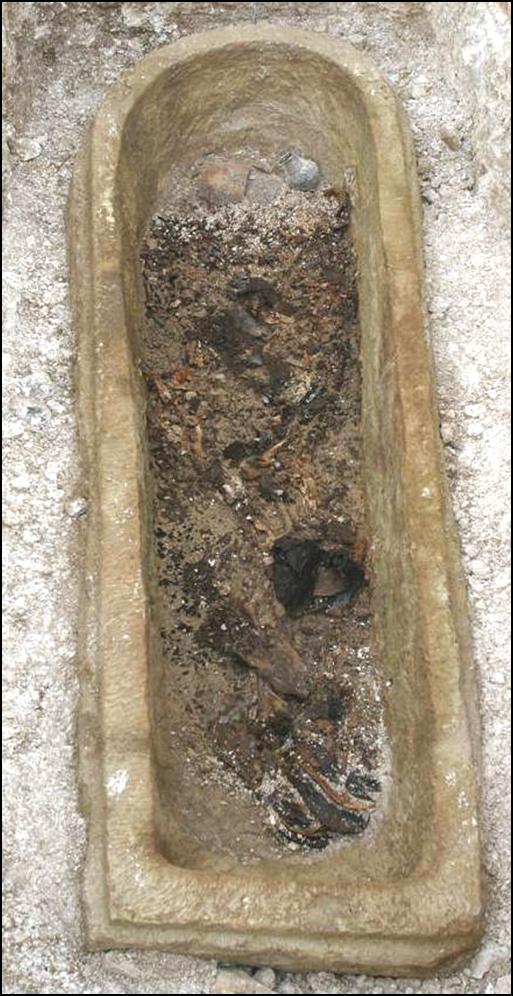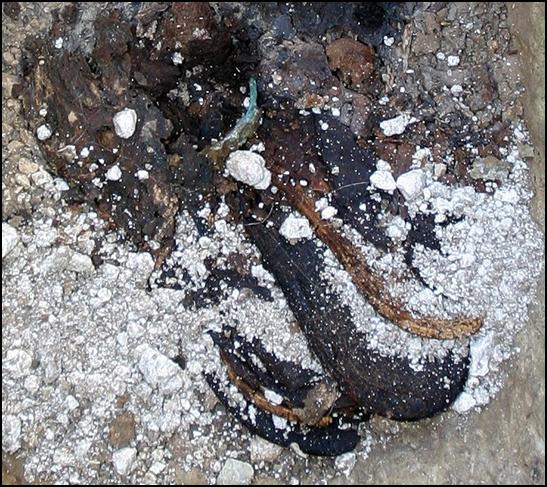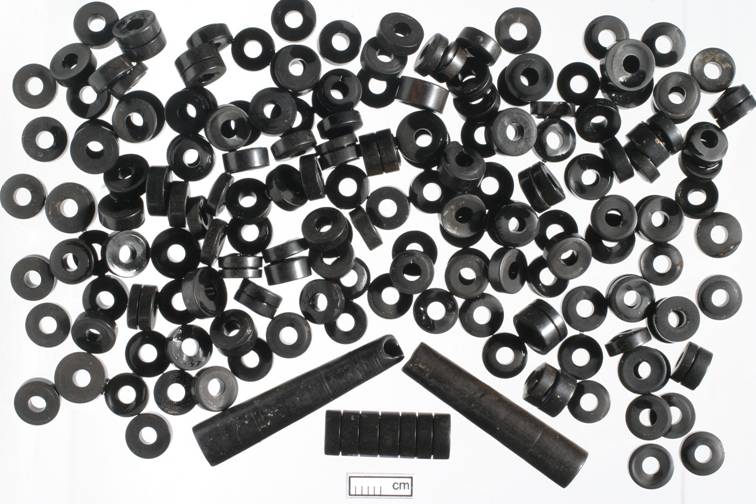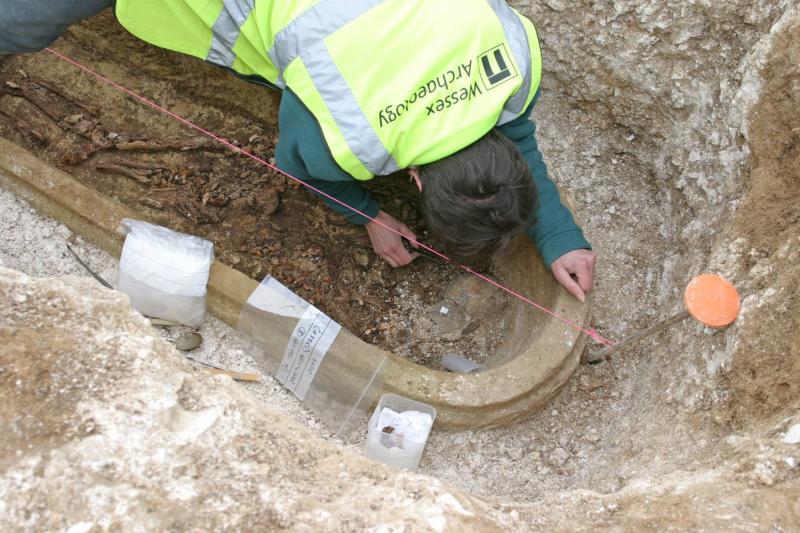A remarkable Roman burial has been found at Boscombe Down, Wiltshire. When archaeologists lifted the lid off a three tonne stone coffin they were surprised to discover that the coffin had not filled with soil.
Instead, they looked down on the skeleton of a woman who was cradling a young child in her arms. A unique environment had been created inside the coffin. This had slowed down the processes of decay so that, even after 1800 years, the woman’s deer skin slippers still survived.


The slippers had cork insoles and a fur lining and are the best preserved examples in Britain of this sort of luxury shoe which was imported from the Mediterranean. The child was buried wearing calf skin shoes which are unique in Britain.
The woman also wore a necklace of Whitby jet round her neck, and on her right ankle was a bronze bangle. By her head was a small lustrous pot imported from France which would have contained drink for her journey to the next world.

Everything points to the woman having been of high status. Almost 300 graves have been excavated at Boscombe Down in five separate cemeteries. Although many contained wooden coffins, this is the only one with a stone coffin. Dating to around 220 AD, the burial is the earliest in its cemetery and the later burials clustered around it. Many of the people in the other graves were buried with hobnailed shoes or boots for their journey to the next world and local copies of the imported pot are common finds.

Dr Andrew Fitzpatrick of Wessex Archaeology said ’The preservation of the shoes is remarkable. Because the processes of decay were quite slow we also have traces of cloth that have been preserved by a chemical reaction with the metal bangle. We even have traces of the puparia from which the coffin flies that infested the body hatched. Squeamish but fascinating!’
The coffin goes on display in Salisbury Museum on Monday 17th December where the finds from the important Bronze Age burial of the Amesbury Archer, which was found a few hundred yards away in 2002, can also be seen.
Further information can be found at the project homepage.